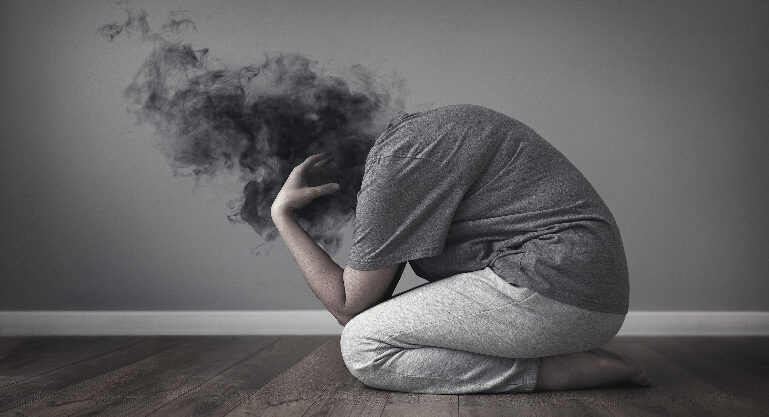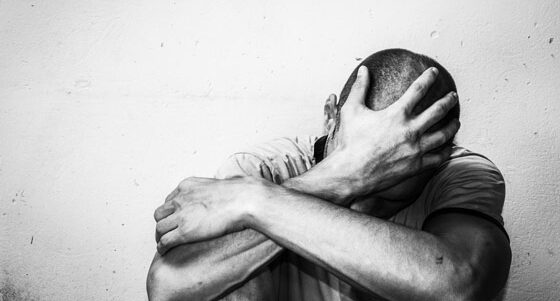Depression is not the result of a single cause. It develops through a combination of biological, psychological, and social factors that overlap in complex ways. Think of it as a “perfect storm” where genetics, brain chemistry, life experiences, and environment all interact.
Here’s a breakdown of the main causes that research and clinicians highlight in the U.S.:
1. Genetics and Family History
- Depression runs in families. If you have a parent or sibling with depression, your risk is higher.
- But there is no single “depression gene.” Instead, many genes contribute small effects.
- Studies show identical twins have a 40–50% likelihood of both experiencing depression if one twin has it, proof that genetics play a big role, but not the whole story.
Translation: Genes create vulnerability, but environment and choices often decide if it’s triggered.
2. Brain Chemistry and Biology
- Depression is strongly linked to imbalances in neurotransmitters: serotonin, dopamine, and norepinephrine.
- Functional brain imaging shows changes in regions like the prefrontal cortex (decision-making), hippocampus (memory), and amygdala (emotions).
- Chronic stress and trauma can physically alter brain circuits over time.
This is why antidepressants and therapy, both of which affect brain chemistry can help reset balance.
3. Trauma, Stress, and Life Experiences
- Childhood trauma (abuse, neglect, loss) increases lifelong risk.
- Current stressors: job loss, divorce, debt, chronic illness can push vulnerable people into depression.
- Even positive but overwhelming changes (new job, moving, having a baby) may trigger symptoms.
4. Medical Conditions and Medications
- Chronic illnesses like diabetes, cancer, heart disease, or chronic pain often contribute to depression.
- Hormonal imbalances (thyroid disorders, postpartum changes, menopause) are key triggers.
- Certain medications: like steroids, blood pressure drugs, or chemotherapy agents list depression as a side effect.
5. Personality and Thinking Patterns
- People who are highly self-critical, perfectionistic, or prone to chronic worry may be more vulnerable.
- Low self-esteem or poor coping mechanisms can amplify the impact of stress.
6. Substance Use
- Alcohol, recreational drugs, and even overuse of prescription medications can trigger or worsen depression.
- Substance use can mask symptoms temporarily but worsens them long-term, creating a cycle of dependency and mood crashes.
7. Social and Environmental Factors
- Loneliness, lack of social support, and unstable relationships all heighten risk.
- Poverty, unemployment, or discrimination increase vulnerability.
- The COVID-19 pandemic amplified many of these factors, doubling depression rates in some studies.
In Short:
Depression doesn’t have one single cause, it’s shaped by genetic predisposition, brain chemistry, medical conditions, personality traits, stress, trauma, and environmental pressures. In many cases, it’s the interaction between these elements that tips someone into depression.
Ayurveda on the Causes of Depression (Rooted, Detailed, Practical)
Ayurveda doesn’t treat depression as “just in the brain.” It says low mood and loss of drive arise when mind–body balance breaks across a few core systems:
- Doshas (Vata, Pitta, Kapha) – the energetic pattern driving your tendencies
- Agni & Ama – digestion/metabolism vs. toxic buildup
- Srotas – channels that carry mind–body information
- Ojas, Prana, Tejas – resilience, life-force, and inner drive
- Gunas (Sattva, Rajas, Tamas) – mental qualities shaping mood and clarity
Below is how depression forms when these pieces drift out of alignment.
1) Dosha-Led Origins (the three “flavors” of causation)
A) Vata-led (most common in modern life)
- What tips it off-balance: irregular sleep and meals, constant travel/screen time, overstimulation, cold/dry foods, trauma/anxiety.
- What actually causes the slide: excess Vata shakes the nervous system (think “wind”), scattering attention and stability.
- Pathway: Vata > Prana Vayu (mental wind) becomes erratic > insomnia, racing thoughts > appetite/energy wobble > mood drops into emptiness/fear.
- You’ll often see: indecision, restlessness & fatigue, “wired-tired,” constipation, coldness.
B) Pitta-led (the “overheated achiever” path)
- What tips it off-balance: chronic overwork, competitiveness, anger suppression, too much heat (climate/spicy food/caffeine).
- Pathway: Pitta > Sadhaka Pitta (emotional processing) overheats > harsh self-criticism, irritability > burnout > collapse into low mood.
- You’ll often see: reflux/acid, headaches, 2–3 a.m. waking with mind racing about performance, “rage turned inward.”
C) Kapha-led (the “stuck in mud” path)
- What tips it off-balance: sedentary routine, heavy/sugary foods, oversleeping, isolation, long winters.
- Pathway: Kapha > Tarpaka Kapha (soothing mind-fluid) becomes dense/stagnant > lethargy, withdrawal, fog > anhedonia.
- You’ll often see: morning heaviness, emotional numbness, cravings for sweets/comfort foods, water retention.
Many people are mixed-type (e.g., Vata–Pitta: agitated + self-critical; Vata–Kapha: anxious + stuck).
2) Agni & Ama (why the gut shows up in your mood)
- Agni = digestive/metabolic fire that turns food > energy and mind-stability.
- Vishama (irregular) Agni – gas, variable appetite (Vata)
- Tikshna (too sharp) Agni – acidity/diarrhea (Pitta)
- Manda (sluggish) Agni – heaviness/bloating (Kapha)
- Vishama (irregular) Agni – gas, variable appetite (Vata)
- When Agni falters, Ama (metabolic residue/toxins) forms and clogs the Manovaha Srotas (mind channels).
- Result: brain fog, low motivation, “heavy head,” and dullness, classic depressive terrain.
Practical cause chain: erratic meals > weak Agni > Ama build-up > clogged mind–gut signaling > low mood, fatigue, and fog.
3) Srotas (channel) blockages: how stress travels
Ayurveda maps stress and low mood through three main highways:
- Manovaha Srotas (mind channels): worry loops, negativity bias, hopelessness
- Pranavaha Srotas (breath/energy): shallow breathing, chest tightness, anxiety
- Annavaha/Rasavaha Srotas (digestion/nutrition flow): appetite changes, malabsorption, systemic low energy
Causes here are chronic stress, sleep debt, ultra-processed diet, and sensory overload, all common in American life.
4) Ojas, Prana, Tejas (why you feel fragile or burnt out)
- Ojas (resilience/“battery”): drains with grief, chronic stress, illness, poor diet. Low Ojas > fatigue, low immunity, joylessness.
- Prana (life-force): scatters with Vata, too many tabs open in your life. Low, erratic Prana > anxiety & depletion.
- Tejas (inner fire/drive): inflames with Pitta, overheating leads to irritability, then burnout > crash.
Cause logic: months of Rajas (overdrive) & poor recovery > Tejas burnout and Ojas depletion > depressive slide.
5) Gunas (the mental climate behind symptoms)
- Sattva: clarity, perspective, connection
- Rajas: agitation, overactivity
- Tamas: heaviness, inertia
A common causal arc: Rajas (grind, hustle, stimulation) > crash into Tamas (numbness, withdrawal). Without Sattva-building habits (nature, gratitude, mindful food, uplifting company), the mind stays stuck in Tamas, experienced as depression.
6) Classical Ayurvedic “root mistakes” (Nidana)
Ayurveda names three fundamental causes behind most disease, including depression:
- Prajñāparādha (“mistake of the intellect”): choosing against your inner signals, overriding sleep, ignoring hunger, living off caffeine, staying in toxic environments.
- Asātmyendriyārtha-samyoga (sensory mismatch/overuse): doomscrolling, loudness, glare, nonstop news > sensory “indigestion.”
- Pariṇāma (time/season/change stress): life transitions, jet lag, shifts in daylight/season not met with proper routine > doshas swing.
Each of these pushes Vata/Pitta/Kapha off their rails in predictable ways.
7) Dhatu depletion (tissues) that set the stage
- Rasa dhatu (first “juice”/nourishment): poor diet or absorption > low vitality, flat mood.
- Majja dhatu (nervous tissue): chronic stress & poor sleep > frayed nerves, hypersensitivity, cognitive dulling.
Over time, this tissue-level depletion becomes the substrate for persistent low mood.
8) Why modern U.S. life amplifies these causes (Ayurveda’s take)
- Circadian disruption: late nights, shift work, blue light > Vata/Pitta swings.
- Ultra-processed diet & snacking culture: weak Agni & Ama.
- Sedentary work & high mental load: Kapha stagnation & Vata agitation (yes, both).
- Isolation & digital “connection” only: Tamas drift, loss of Sattva inputs (nature, community).
- Chronic performance pressure: inflamed Tejas > burnout > Ojas crash.
9) Putting it together (the Ayurvedic samprapti—sequence)
- Trigger(s): irregular routine, stress, diet mismatch, screen overload
- Dosha imbalance (often Vata first; Pitta or Kapha may join)
- Agni disturbed > Ama forms
- Srotas clog (mind, breath/energy, digestion)
- Ojas depletes; Prana scatters; Tejas burns or dims
- Gunas shift from Sattva > Rajas/Tamas
- Lived experience: low mood, anhedonia, fog, fatigue, withdrawal, or irritable burnout
That sequence is the Ayurvedic cause of what we label “depression.”
10) Gentle notes on safety
Ayurveda is a complement, not a substitute, for medical care. If you notice suicidal thoughts, severe decline in functioning, or new agitation/mania, seek clinical help immediately (U.S.: call/text 988). Use Ayurveda to rebuild foundations (routine, digestion, energy, clarity) alongside evidence-based treatment.



